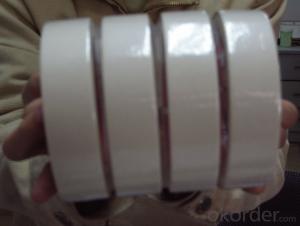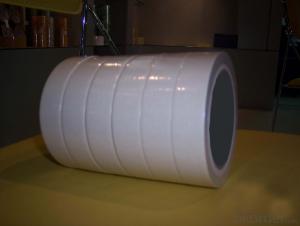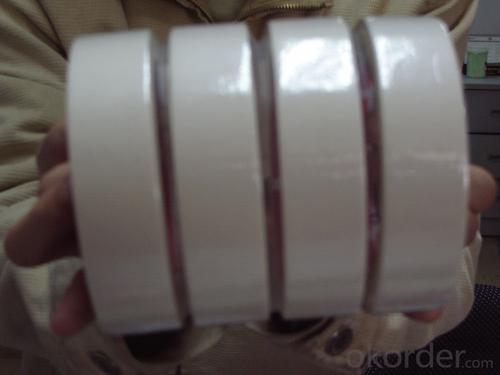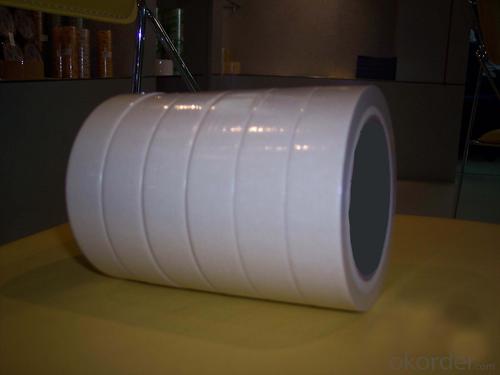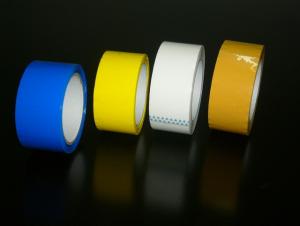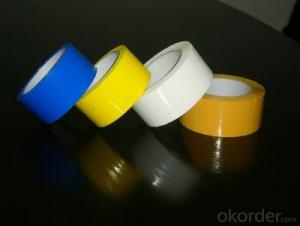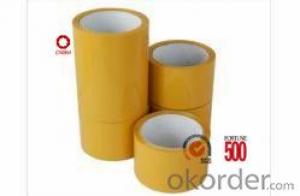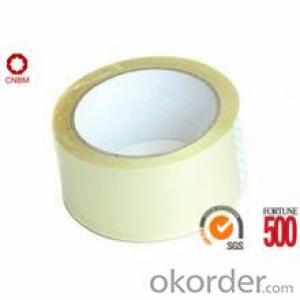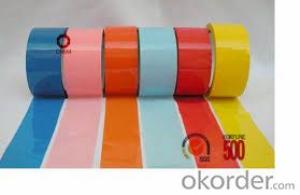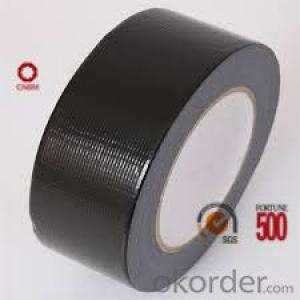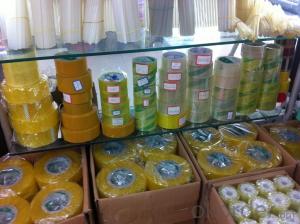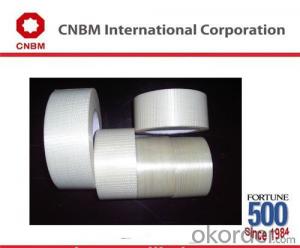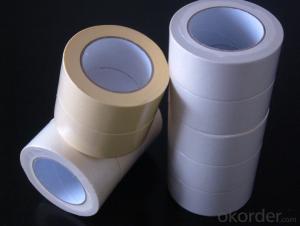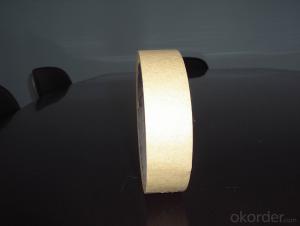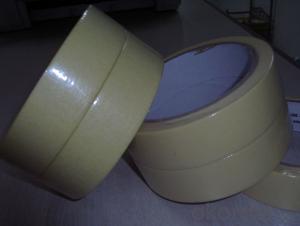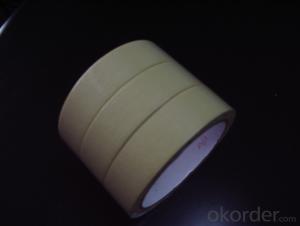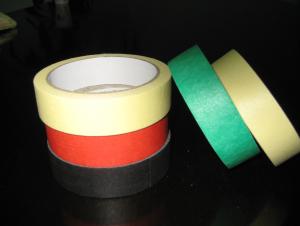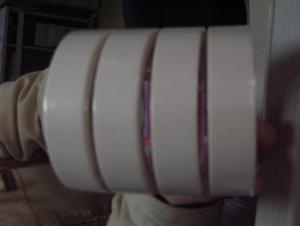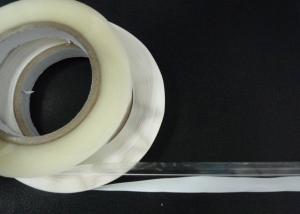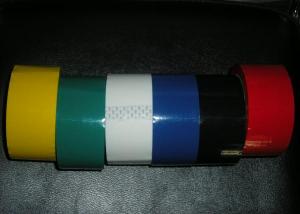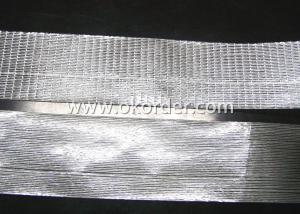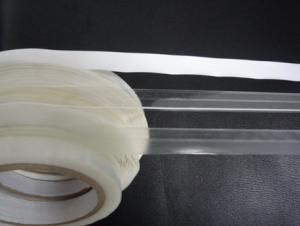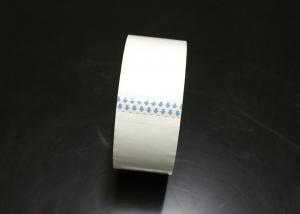Printed Packaging Tape UK - Precision Sensitive Decorative Masking Tape MY-37
- Loading Port:
- China Main Port
- Payment Terms:
- TT OR LC
- Min Order Qty:
- -
- Supply Capability:
- -
OKorder Service Pledge
OKorder Financial Service
You Might Also Like
product description:
Quick details:
Material: Crepe Paper
Use: Decoration , Car Painting
Adhesive Side: Single Sided
Adhesive: Rubber
Place of Origin: China (Mainland)
color: natural, white, yellow, black, green, red, black, blue, etc.
Specifications:
Item No. Carrier Adhesive Total
ThicknessInitial
TackHolding
PowerTensile
StrengthElongation Temperature
resistanceUV
resistanceMY580 crepe paper rubber 160 micron 10# 2h 16N/cm <12% 60DC -- MY690 crepe paper rubber 150 micron 8# 3h 16N/cm <12% 60DC -- MY6929 crepe paper rubber 150 micron 10# 3h 16N/cm <10% 80DC -- M110 crepe paper rubber 160 micron 8# 3h 26N/cm <10% 110DC -- M130 crepe paper rubber 160 micron 13# 4h 26N/cm <10% 130DC -- M07 crepe paper rubber 130 micron 9# 3h 26N/cm < 20% 60DC -- M08 crepe paper rubber 130 micron 10# 5h 26N/cm <16% 70DC -- M09 crepe paper rubber 145 micron 12# 10h 24N/cm <20% 80DC -- M20F crepe paper water based
acrylic140 micron 10# 10h 26N/cm <20% 90DC 7 days Application:
MY580, MY690, MY6929, M07, M08 are mainly used for room temperature application such as interior painting masking, silk screening, light duty packaging, bunding, holding, splicing & tabbing, and other non-critical applications where a pressure-sensitive tape is needed. MY110, MY130, M09 are mainly used for high temperature application such as car painting etc. M20F is for UV resistant application....
Packing:Paper Core ID: 76mm
Jumbo size: 0.99m x 1800m, 1.22m x 1800m, 1.51m x 1800m
Cut roll size: As per customer's requirementCut rolls: Shrink package, placed in cartons, with or without pallet
Jumbo rolls & log rolls: Packed with kraft paper and stretch wrap film, with or without pallet
Cut rolls: Shrink package, placed in cartons, with or without pallet
Jumbo rolls & log rolls: Packed with kraft paper and stretch wrap film, with or without palletCompany Advantages:
1. Stable financial status and sound reputation as a state invested corporation under the direct administration of the State Council of PRC;
2. CNBM’s world wide influence as one of the 500 global fortunes specializing in building materials including adhesive tapes;
3. More than a decade’s exporting experience and technology in adhesive tape industry;
4. Preferencial shipping channels, with a separate team dealing with shipping.
- Q: Can packaging tape be used for sealing cloth or fabric items?
- Yes, packaging tape can be used for sealing cloth or fabric items. Packaging tape is designed to be strong and adhesive, making it effective for securing and sealing various materials, including cloth and fabric. It can be particularly useful for sealing packages containing cloth or fabric items, providing a secure closure to prevent the contents from falling out or getting damaged during transportation or storage. Additionally, packaging tape is often transparent, allowing for easy identification of the contents without compromising the overall appearance of the cloth or fabric item.
- Q: Can packaging tape be used for sealing packages with electronics or electrical components?
- Yes, packaging tape can be used for sealing packages with electronics or electrical components. However, it is important to note that not all packaging tapes are suitable for this purpose. When selecting a packaging tape for sealing packages with electronics or electrical components, it is recommended to choose an anti-static or ESD (electrostatic discharge) safe tape. These tapes are specifically designed to prevent static electricity from damaging sensitive electronic components during shipping or handling. Using regular packaging tape without anti-static properties may pose a risk of static discharge that could potentially damage the electronics or affect their performance. Therefore, it is crucial to consider the specific requirements of the electronics or electrical components being packaged and select an appropriate tape to ensure their protection.
- Q: Can packaging tape be used for sealing metal boxes?
- Indeed, metal boxes can be sealed using packaging tape. Specifically engineered to create a secure and long-lasting seal on different surfaces, such as metal, packaging tape possesses a powerful adhesive that effectively adheres to metal, guaranteeing that the box stays sealed throughout storage or transportation. Nevertheless, it is crucial to select a packaging tape appropriate for demanding tasks, capable of enduring the weight and pressure that the metal box may experience. Furthermore, it is advised to cleanse the metal surface prior to applying the tape to ensure optimal adhesion.
- Q: How do I prevent packaging tape from tearing during removal?
- To prevent packaging tape from tearing during removal, there are a few strategies you can try: 1. Apply heat: One effective method is to use a hairdryer or heat gun to warm up the tape. The heat softens the adhesive, making it easier to peel off without tearing. Be careful not to overheat or burn the tape, though. 2. Use a cutting tool: If the tape is difficult to remove, you can use a sharp cutting tool like a utility knife or scissors to carefully cut through it. This way, you can avoid tearing the tape and remove it in smaller, more manageable sections. 3. Slow and steady approach: Take your time and be patient when removing the tape. Pull it slowly and at a low angle, applying gentle pressure to avoid tearing. If you encounter resistance, stop and try a different angle or apply a bit of heat to loosen the adhesive. 4. Seek assistance from a solvent: If the tape is particularly stubborn, you can try using a solvent like rubbing alcohol or adhesive remover. Apply a small amount to a cloth or cotton ball and gently rub it on the tape to dissolve the adhesive. Test the solvent on a small, inconspicuous area first to ensure it doesn't damage the surface. 5. Choose the right tape: Using high-quality packaging tape can also help prevent tearing during removal. Look for tapes with strong adhesion and good tensile strength. Reinforced or heavy-duty tapes tend to be more resistant to tearing. By employing these techniques and being cautious, you can successfully remove packaging tape without tearing it.
- Q: Is packaging tape safe to use on plastic outdoor furniture?
- Yes, packaging tape is generally safe to use on plastic outdoor furniture. Packaging tape is designed to adhere to various surfaces, including plastic. However, it is important to consider a few factors before using packaging tape on your outdoor furniture. Firstly, ensure that the plastic surface is clean and free from any dirt or debris. This will help the tape to adhere better and prevent any damage to the furniture. Additionally, make sure that the tape is applied evenly and firmly to avoid any peeling or lifting. It is also important to keep in mind that packaging tape is not specifically designed for long-term outdoor use. While it can be effective in temporarily securing items or protecting surfaces, it may not withstand prolonged exposure to harsh weather conditions or UV rays. Over time, the tape may deteriorate or leave behind sticky residue on the plastic furniture. If you require a more durable and weather-resistant solution, it is recommended to use specific outdoor adhesives or tapes that are designed for this purpose. These products are typically made with materials that can withstand outdoor elements and are better suited for long-term use on plastic outdoor furniture.
- Q: Can packaging tape be printed with custom logos or designs?
- Yes, packaging tape can be printed with custom logos or designs. This allows businesses to personalize their packaging and promote their brand identity. Custom printed packaging tape can also serve as a marketing tool by creating a professional and eye-catching appearance for packages.
- Q: Is packaging tape suitable for sealing heavy boxes?
- Indeed, packaging tape proves to be fitting when it comes to securing hefty boxes. Specifically engineered to offer a robust and reliable seal, packaging tape caters to boxes of varying sizes and weights. Crafted from resilient substances like polypropylene or reinforced paper, it enhances the tape's durability and guarantees its ability to withstand the weight and pressure exerted by bulky boxes. Furthermore, packaging tape commonly possesses a potent adhesive that adheres effectively to cardboard surfaces, ensuring a tight seal capable of enduring the challenges of transportation and handling. Nevertheless, it is advisable to utilize multiple strips of tape to fortify the seal on heavy boxes, thereby enhancing their security.
- Q: The tape is left on the door. The glue has dried for a long time. What chemicals can be used to remove it without damaging the paint?
- Five methods of removing viscose tape residue1, first water, and then use a small blade scraping.2, alcohol division. With a soft cloth dipped in enough 95% alcohol, and then gently wipe the self-adhesive place, sticky tape will easily become soft off, and alcohol will not generally damage the plastic parts or painted surface. But sometimes find some alcohol on the sticker is not very effective, this is use a soft cloth dipped in a little gasoline graze attention stickers, because of a plastic or gasoline paint has dissolved, so be careful to use either first in an important place of light clean look, if there is no problem use; but must be careful not to use too much fuel, at the same time should be short! I tried to wipe with gasoline, a short time on the surface of the body, not what obvious influence on the coating surface of the body. In this way, the tape will be easily removed.
- Q: What are the benefits of using transparent packaging tape?
- The benefits of using transparent packaging tape include clear visibility of the contents of the package, easy identification of any tampering or damage, professional appearance, and the tape's durability and strength for securing packages effectively.
- Q: Is packaging tape safe for use on photos or artwork?
- Although packaging tape can be used on photos or artwork, it is not the optimal choice. Its primary purpose is to secure boxes and packages, and it may not offer long-term protection or be archival quality. Using packaging tape on photos or artwork has the potential to harm the surface or leave residue upon removal. Additionally, it may gradually yellow or discolor over time, thereby affecting the visual appeal of the artwork or photo. To preserve the longevity and integrity of your photos or artwork, it is recommended to employ acid-free archival tape specifically designed for this purpose. Archival tape is crafted with materials that are safe for delicate surfaces and can be effortlessly removed without causing any damage. In conclusion, while packaging tape can serve as a temporary solution, it is advisable to utilize archival tape to ensure the utmost protection for your valuable photos or artwork.
Send your message to us
Printed Packaging Tape UK - Precision Sensitive Decorative Masking Tape MY-37
- Loading Port:
- China Main Port
- Payment Terms:
- TT OR LC
- Min Order Qty:
- -
- Supply Capability:
- -
OKorder Service Pledge
OKorder Financial Service
Similar products
Hot products
Hot Searches
Related keywords
